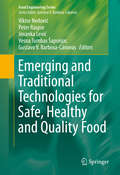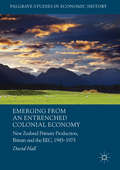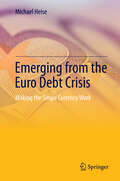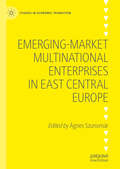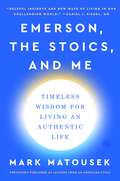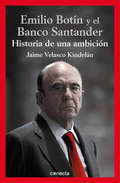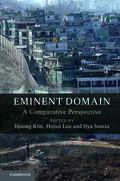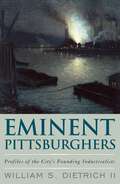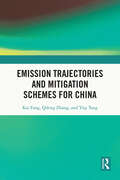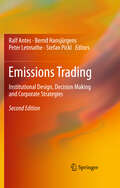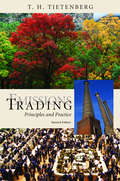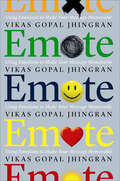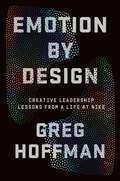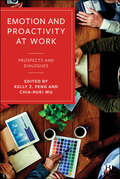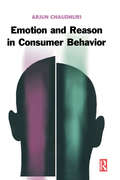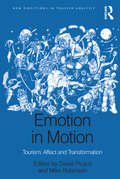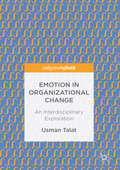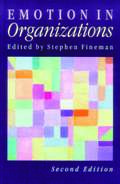- Table View
- List View
Emerging and Traditional Technologies for Safe, Healthy and Quality Food
by Gustavo V. Barbosa-Cánovas Viktor Nedović Peter Raspor Jovanka Lević Vesna Tumbas ŠaponjacSince its inception in 2002, the Central European Food Congress (CEFood) has been a biannual meeting intended for food producers and distributors as well as researchers and educators to promote research, development, innovation and education within food science and technology in the Middle European region with a tight connection to global trends. The 6th CEFood, held in Novi Sad, Serbia, May 23-26, 2012, highlighted the novel technologies and traditional foods aimed at both the European and global markets. Specifically, CEFood 2012 focused on the latest progress in fundamental and applied food science, research and development, innovative technology, food ingredients, novel trends in nutrition and health, functional and bioactive food, food engineering, food safety and quality and the food and feed market. This book will consist of contributions from various presenters at CEFood 2012, covering the major themes of this Congress. Chapters contributed by expert presenters from the 6th CEFood Congress of 2012 Highlights the novel technologies of food science Discusses the future of the food industry and food research
Emerging from an Entrenched Colonial Economy
by David HallThis book is a study of New Zealand shaking off its quasi-colonial dependence on Britain. Has New Zealand moved beyond its colonial heritage? Is it now time to remove the Union Jack from the national flag and change to a Republic? Hall analyses the three decades after World War II when changes in Britain, mainly as a consequence of that war, forced New Zealand to seek new markets for its exports, which were predominantly primary produce; notably meat, wool and dairy products. A key symbol of these changes was Britain becoming a member of the European Economic Community (EEC) in 1973 - how did this engagement with Europe impact on trade with a Commonwealth country? Significantly, rather than politicians and diplomats, voices of New Zealand's primary producers (the 'backbone of the economy') are used to describe the country's decolonisation in trade. The volume traces how relationships between Britain and one of its main dominions evolved from their quasi-colonial relationship and how the dominion coped with breaking away from over-dependence on Britain not just in economic terms but also in sentimental terms. Hall provides an interesting overview of the final stages of decolonisation.
Emerging from the Euro Debt Crisis: Making the Single Currency Work
by Michael HeiseDespite the success of policymakers and the European Central Bank in calming down financial markets since the summer of 2012, European leaders are still facing formidable challenges in making the single currency work in a complex environment. This book starts with a review of the necessary elements of a currency union and highlights the reasons why the system has run into its present troubles. It points to important policy recommendations to be drawn from a structural analysis of the currency union, achievements and failures of the currency union and ways to improve fiscal sustainability and arrive at stable macroeconomic performance for the union. It highlights the importance and the effectiveness of structural reforms that have to accompany fiscal consolidation and discusses the appropriate tools of crisis management and why a restructuring of the Eurozone is not the right step. Based on these considerations, a long-term target picture for the Eurozone as a part of the EU is outlined, providing a valuable contribution to a hopefully intense public debate in the coming years.
Emerging from the Global Crisis: Macroeconomic Challenges Facing Low-Income Countries
by Stefania FabrizioThis report from the International Monetary Fund on the impact of the global economic crisis on low income countries (LICs) examines the strengths and weaknesses of their positions relative to previous downturns. The volume considers the pre-crisis positions of the LICs and discusses the relatively mild effects of the current economic climate on some developing countries compared to wealthier states more deeply integrated with global financial infrastructures. The work includes numerous charts and tables as well as appendices providing relevant statistical data. Annotation ©2011 Book News, Inc. , Portland, OR (booknews. com)
Emerging-market Multinational Enterprises in East Central Europe (Studies in Economic Transition)
by Ágnes SzunomárThe rise of multinational enterprises (MNEs) from emerging markets is topical, important and poses a number of questions and challenges that require considerable attention in the future from academia as well as business management. The recent takeovers of high-profile companies in developed or developing countries by non-European emerging-market MNEs (EMNEs) – such as Lenovo, Wanhua (China), Hindalco (India), CVRD (Brazil), Cemex (Mexico), Lukoil (Russia), etc. – as well as the greenfield or brownfield investments of emerging companies (such as Huawei, ZTE, Tata, Pepco, etc.) show a new trend where new kind of firms become major players globally. EMNEs have become important players in several regions around the globe, ranging from the least developed countries of Africa through the developing markets in Latin America and Asia to the developed countries of the United States or the European Union, including East Central European (ECE) countries. EMNEs presence on the global level has resulted in numerous studies in the international literature but those research results barely cover EMNEs’ activities in the ECE region (in the East Central European EU member countries, including the Czech Republic, Hungary, Poland, Slovakia and Slovenia). The existing books typically focus on the investment activity of a single country or region (such as China or East Asia) but a comprehensive analysis is still missing in this regard. The novelty of this edited volume is that it aims at exploring EMNEs location determinants, strategies, activities and challenges in East Central Europe by discussing its anomalies to the traditional theories as well as to other types of MNEs in the ECE region. The authors focus on EMNEs not only from China but from other important emerging countries, too, such as Russia, India, South Korea, Taiwan, Turkey, Brazil or South Africa.
Emerson, the Stoics, and Me: Timeless Wisdom for Living an Authentic Life
by Mark Matousek“This is a beautiful book, full of ideas that could help restore America’s genius for freedom and promise.” —Thomas Moore, New York Times bestselling author of Care of the SoulA lifelong Emersonian scholar, teacher, and spiritual seeker reveals how American philosopher Ralph Waldo Emerson’s twelve essential teachings hold the answer to living an authentic and fulfilling life, one that is in harmony with our souls.Ralph Waldo Emerson was a spiritual revolutionary whose profound vision of human potential came to define the American character. Known as America’s original Stoic, he offered a radical message of optimism, authenticity, and self-realization that is more necessary today than ever.In this timely, remarkable book, noted memoirist and teacher Mark Matousek reveals the depths of Emerson’s extraordinary wisdom, demonstrating how his timeless philosophy can help us navigate the challenges of contemporary life. Using personal stories, psychological research, and life lessons from Emerson and his contemporaries—including Thoreau and Whitman—he offers practical lessons in the art of living.They include:ON ORIGINALITY—Character is everythingON PERSPECTIVE—You are how you seeON NONCONFORMITY—Build your own worldON RESILIENCE—Without confidence, the universe is against youON VITALITY—A stream of power runs through youAnd moreEmerson’s far-reaching vision of excellence and spiritual flourishing is the medicine we need to heal ourselves. “Trust yourself,” he teaches. “Once you make a decision, the universe conspires to make it happen.” This philosophy of hope, known as transcendentalism, is the vein of gold in the American psyche. Lessons from an American Stoic helps us to reclaim our national treasure.
Emigration And Economic Development: The Case Of The Yemen Arab Republic
by Jon C. SwansonAlthough social scientists tend to agree that emigration improves the standard of living of migrants and their families, research suggests that more generally it has a neutral or even negative effect on economic development in the home country. The Yemen Arab Republic is a case in point: while living standards there have improved with emigration, t
Emilio Botín y el Banco Santander: Historia de una ambición
by Jaime Velasco Kindelán«Emilio Botín es el banquero más astuto de Europa. » FortuneEl Banco Santander es hoy el primer banco español y de la zona euro, y uno de los más importantes del mundo. ¿Cómo se ha pasado de un modesto banco fundado por unos comerciantes en Santander en el siglo XIX a una de las empresas más importantes a nivel global, con una enorme influencia en la economía del país?Este libro quiere responder a esta pregunta analizando los orígenes del banco y, de modo especial, la estrategia aplicada por Emilio Botín para lograr que un modesto banco nacional se convierta en un jugador de primer nivel en la competitiva liga de las finanzas mundiales. Detrás de este éxito se esconde una ambición personal inexorable, capaz de romper el estatus quo, y llevar a cabo una agresiva política comercial que ha quedado en el recuerdo de muchos como la «guerra de las súper cuentas»". Con esta estrategia imparable, Emilio Botín ha iniciado una política de absorciones bancarias brillantemente planificadas que incluye una decidida apuesta por la expansión internacional, en la que siempre ha primado el emblema de su marca: Banco Santander.Emilio Botín y el Banco Santander desvela las claves de este éxito global y la particular forma de gestionar, que diferencia a Emilio Botín del resto de los empresarios y banqueros del mundo.
Emily Post's Business Etiquette
by Lizzie Post Daniel Post SenningThis completely updated edition of Emily Post&’s essential guide to business etiquette has been fully refreshed with comprehensive advice on everything professionals and jobseekers need to know about how to succeed in the business world today.No matter the industry or the position, business is built on relationships—and at the heart of all good relationships is good etiquette. Understanding good business etiquette skills and how to apply them to your job and your professional relationships is key to building a successful career. Work environments and the relationships we experience in them are complex. It&’s important to know how to identify what type of environment and relationships you&’re in and how to manage and adjust your behavior accordingly.Emily Post&’s Business Etiquette includes thoughtful guidance for all workplace scenarios with sample language, examples and exercises, charts, and key takeaways from every chapter. Professionals—jobseekers and new hires through those in the C-suite—are given the dos and don&’ts of traditional workplace etiquette, from knowing when to send a thank-you note to successfully navigating a business meal, along with modern advice addressing common post-pandemic concerns such as video conferencing norms, workflow management, and communication tools for remote work. Some topics you&’ll find in Emily Post&’s Business Etiquette:The importance of owning your professional image and understanding what it communicates in a multitude of settings.Written communication skills for everything from messaging channels such as Slack and Teams to internal and external emails.Seating charts for meetings, networking dinners, and more.A gender-free guide to attire for all occasions.Tips for offering constructive criticism and feedback effectively.Expectations for host and guest roles, both virtual and in person.With helpful new insight into understanding generational differences, gender-neutral manners, and embracing diversity, Emily Post&’s Business Etiquette is the perfect resource for those looking to get ahead in their careers and establish their professional identities.
Eminent Domain
by Ilya Somin Iljoong Kim Hojun LeeIn 2005, the Supreme Court ruled that the city of New London, Connecticut, could condemn fifteen residential properties in order to transfer them to a new private owner. Although the Fifth Amendment only permits the taking of private property for "public use," the Court ruled that the transfer of condemned land to private parties for "economic development" is permitted by the Constitution--even if the government cannot prove that the expected development will ever actually happen. The Court's decision in Kelo v. City of New London empowered the grasping hand of the state at the expense of the invisible hand of the market. In this detailed study of one of the most controversial Supreme Court cases in modern times, Ilya Somin argues that Kelo was a grave error. Economic development and "blight" condemnations are unconstitutional under both originalist and most "living constitution" theories of legal interpretation. They also victimize the poor and the politically weak for the benefit of powerful interest groups and often destroy more economic value than they create. Kelo itself exemplifies these patterns. The residents targeted for condemnation lacked the influence needed to combat the formidable government and corporate interests arrayed against them. Moreover, the city's poorly conceived development plan ultimately failed: the condemned land lies empty to this day, occupied only by feral cats. The Supreme Court's unpopular ruling triggered an unprecedented political reaction, with forty-five states passing new laws intended to limit the use of eminent domain. But many of the new laws impose few or no genuine constraints on takings. The Kelo backlash led to significant progress, but not nearly as much as it may have seemed. Despite its outcome, the closely divided 5-4 ruling shattered what many believed to be a consensus that virtually any condemnation qualifies as a public use under the Fifth Amendment. It also showed that there is widespread public opposition to eminent domain abuse. With controversy over takings sure to continue, The Grasping Hand offers the first book-length analysis of Kelo by a legal scholar, alongside a broader history of the dispute over public use and eminent domain and an evaluation of options for reform.
Eminent Economists II
by Michael Szenberg Lall B. RamrattanThe sequel to Eminent Economists, this book presents the ideas of some of the most outstanding economists of the past half century. The contributors, representing divergent points of the ideological compass, present their life philosophies and reflect on their conceptions of human nature, society, justice, and the source of creative impulse. These self-portraits reveal details of the economists' personal and professional lives that capture the significance of the total person. The essays represent streams of thought that lead to the vast ocean of economics, where gems of the discipline lie, and the volume will appeal to a wide array of readers, including professional economists, students, and laypersons who seek a window into the heart of this complex field. The contributors include Alan S. Blinder, Clair Brown, John Y. Campbell, Vincent P. Crawford, Paul Davidson, Angus Deaton, Harold Demsetz, Peter Diamond, Avinash Dixit, Barry Eichengreen, Jeffrey Frankel, Richard B. Freeman, Benjamin M. Friedman, John Hull, Michael D. Intriligator, Peter B. Kenen, Anne O. Krueger, Helen F. Ladd, Harry M. Markowitz, Frederic S. Mishkin, Elinor Ostrom, Anwar Shaikh, Jeremy J. Siegel, Vernon L. Smith, Robert M. Stern, Myra H. Strober, Hal R. Varian, Michelle J. White, and Marina V. N. Whitman.
Eminent Pittsburghers: Profiles of the City's Founding Industrialists
by William S. DietrichThese biographical essays, many reprinted from The Pittsburgh Quarterly, describe the men who transformed Pittsburgh into one of the leading industrial cities in the world. Included here are such essays as "The Amazing Career of George Westinghouse," "The Judge and the Little Boy: The Triumph and the Tragedy of A.W. Mellon," "Smilin Charlie Schwab: The Joys and Sorrows of Life on a Large Canvas," and more. The book also includes "A Very Short History of Pittsburgh" that describes how its "geography and geology have been destiny," where the city "not only faces but opens the great heartland of America."
Emirates Airline: Connecting the Unconnected
by John Clayton Juan AlcacerNarrates the story of Emirates, an airline founded in 1985 in Dubai that by 2013 was among the three largest commercial airlines in the world. The case emphasizes how Emirates capitalized on its location-a small city-state strategically located to reach of the world population in a flight of less than eight hours-to build a fast-growing and profitable hub-based business model. The case details how Emirates' chooses new routes, technology, and equipment and manages its human resources, marketing and branding, and government relationships-together forming an internally consistent strategy that capitalizes on opportunities across geographic markets. Importantly, students are asked to evaluate if the airlines' strategy will be sustainable as Emirates faces technical and political challenges to expand and must compete with numerous new players from the Middle East.
Emiratization in the UAE Labor Market
by Georgia DaleureThis book combines classic and recent studies investigating challenges to Emiratization - full employment of Emirati nationals who make up only about 10% of the total workforce - in the United Arab Emirates (UAE). The book offers a comprehensive overview of the events leading to the country's rapid growth and development, as well as important social and cultural issues arising as the country transitioned from an isolated traditional economy to an open globalized one, and explores the specific challenges of incorporating Emiratis in their own vibrant economy. This topic is of interest to scholars, policymakers, and those considering investing or seeking employment in the UAE since it emerged as a Western-friendly, politically stable, and prospering oil-producing country in a region plagued by political, social, and economic turmoil.
Emission Trajectories and Mitigation Schemes for China
by Kai Fang Qifeng Zhang Yiqi TangThis book seeks to model the possible emission trajectories and identify the feasible mitigation schemes for China to meet its climate commitments to peak emissions before 2030 and net zero emissions before 2060. In line with these ambitions, China has taken a number of measures to improve carbon efficiency and energy structure in recent years. The book first analyzes changes in the carbon footprint at the city level, identify the different pathways to peak emissions by province and industry, and develop a bottom-up approach to determining when and how China could reach peak emissions. It then illustrates how the Emissions Trading Scheme (ETS) reduces abatement costs, and examines the cost-saving effects under carbon intensity reduction and peak emissions targets. Based on the findings and the status quo in China, the authors propose a multicriteria allocation scheme for carbon emission allowances at the provincial level and quantify the impact of sectoral coverage on the abatement costs of the ETS by developing a cost-based approach to sectoral coverage in China. In addition, the co-benefits between CO2 and PM2.5 reductions as a result of the ETS operation are elaborated. The book will benefit researchers and policy-makers interested in environmental governance, climate policy, environmental economics, and sustainable development.
Emissions Trading
by Bernd Hansjürgens Stefan Pickl Peter Letmathe Ralf AntesEmissions trading challenges the management of companies in an entirely new manner: Not only does it, like other market-based environmental policy instruments, allow for a bigger flexibility in management decisions concerning emission issues. More importantly, it shifts the mode of governance of environmental policy from hierarchy to market. But how is this change reflected in management processes, decisions and organizational structures? The contributions in this book discuss the theoretical implications of different institutional designs of emissions trading schemes, review schemes that have been implemented in the US and Europe, and evaluate the range of investment decisions and corporate strategies which have resulted from the new policy framework.
Emissions Trading: Principles and Practice
by Thomas H. TietenbergFirst published in 1985, Emissions Trading was a comprehensive review of the first large-scale attempt to use economic incentives in environmental policy in the U.S. and of the empirical and theoretical research on which this approach is based. Since its publication it has consistently been one of the most widely cited works in the tradable permits literature. The second edition of this classic study of pollution reform considers how the use of transferable permits to control pollution has evolved, looks at how these programs have been implemented in the U.S. and internationally, and offers an objective evaluation of the resulting successes, failures, and lessons learned over the last twenty-five years.
Emote: Using Emotions to Make Your Message Memorable
by Vikas Gopal JhingranA self-proclaimed introvert turned Toastmaster Champion reveals how to infuse your message with emotions to improve your public speaking skills.Many people fear public speaking more than death. Most wish they could do it better, or at least avoid the sweating, stuttering jitters that plague them before any presentation. Vikas Jhingran has been there. He was so poor at speaking in public that his supervisor wouldn’t let him make presentations to clients—even when he had done all the work. When he tried to improve his skills by studying professional speakers, he was surprised to discover that few presenters understood speech making at a fundamental level. Their overly prescriptive approach often confused the speech and the tools that are used to deliver it. What listeners are most engaged by are the emotions that go with your message. By focusing on this important aspect of communication—the transfer of emotion—this guide to successful communication:Develops an emotion-driven approach that will help you deliver a powerful, effective message. Encourages introverts and non-native speakers to find their voices and deliver impactful speeches. Clarifies the roles of common speaking tools and shows how to use them effectively.In Emote, Vikas presents an emotion-based approach that will change the way you think about verbal communications, helping you gain the confidence you need to stand in the spotlight, create connections, and get your message across to anyone.“Emote approaches verbal communications from a very human perspective. It will help you improve verbally, whether public speaking or in one-on-one conversations.” —Nancy Duarte, author of Resonate
Emotion By Design: Creative Leadership Lessons from a Life at Nike
by Greg HoffmanInnovative strategies for success from former Nike CMO Greg Hoffman, who had a major hand in crafting Nike&’s singular brand and was instrumental in its most high-profile breakthrough campaigns. In EMOTION BY DESIGN, Hoffman shares lessons and stories on the power of creativity drawn from almost three decades of experience within Nike. A celebration of ingenuity and a call-to-arms for brand-builders to rediscover the human element in forming consumer bonds, EMOTION BY DESIGN is an insider&’s guide to unlocking inspiration within a brand and building stronger emotional connections with consumers, using Hoffman&’s three favorite guiding principles:Creativity is a Team SportDare to be RememberedLeave a Legacy, Not Just a MemoryOver the course of a twenty-seven-year Nike career—from intern to Chief Marketing Officer—Hoffman led teams in shaping and expressing Nike&’s brand voice and identity through storytelling and experiences. Every story was distinct, yet the result was always the same: a strong emotional attachment between products and people—quite literally emotion by design. With fascinating stories about Nike&’s most famous campaigns, EMOTION BY DESIGN shares Hoffman&’s philosophy and principles on how to create an empowering brand that resonates deeply with people by unlocking the creativity within your organization and unleashing it out into the world.
Emotion and Proactivity at Work: Prospects and Dialogues
by Kelly Z. Peng and Chia-Huei WuEPDF and EPUB available Open Access under CC-BY-NC-ND licence. Individuals’ behaviours at work are known to be shaped by cold, or cognitive-motivational, processes as well as hot, or affect-motivational, processes. To date, employee proactivity research has mainly focused on the ‘cold’ side. But emotion has been proposed to ‘energize’ employees’ proactivity, especially in interdependent and uncertain work environments. In this pioneering work, expert scholars offer new thinking on the process by examining how emotion can drive employees’ proactivity in the workplace and how, in turn, that proactivity can shape one’s emotional experiences.
Emotion and Reason in Consumer Behavior
by Arjun ChaudhuriEmotion and Reason in Consumer Behavior provides new insights into the effects that emotion and rational thought have on marketing outcomes. It uses sound academic research at a level students and professionals can understand.
Emotion in Motion: Tourism, Affect and Transformation (New Directions in Tourism Analysis)
by David Picard Mike RobinsonWhat happens when tourists scream with fear, shout with anger and frustration, weep with joy and delight, or even faint in the face of revealed beauty? How can certain sites affect some tourists so deeply that they require hospitalisation and psychiatric treatment? What are the inner contours of tourist experience and how does it relate to specific emotional cultures? What are the consequences of the emotional cultures of tourists upon destinations? How are differences in emotional culture mobilized and played out in the transnational contact zones of international tourism? While many books have engaged with the structural frames of tourist practice and experience, this is the first to deal with the emotional dimensions of tourism, travel and contact and the ways in which they can transform tourists, destinations and travel cultures through emotional engagements. The book brings together an international array of scholars from anthropology, psychiatry, history, cultural geography and critical tourism studies to explore how the movement to, and through, the realms of exotic people, wild natures, subliminal art, spirit worlds, metropolitan cities and sexualised 'others' variably provoke emotions, peak experiences, travel syndromes and inner dialogues. The authors show how tourism challenges us to engage with concepts of self, other, time, nature, sex, the body and death. Through a set of ethnographic and historic cases, they demonstrate that such engagements usually have little to do with the actual destination but rather, are deeply anchored in personal memories, repressed fears and desires, and the collective imaginaries of our societies.
Emotion in Negotiations: An Introduction
by Colleen Kaftan Andrew WasynczukThis note reviews some of the relevant research and offers advice for managing and dealing with emotions in the negotiation context. In particular, negotiators should strive to understand their own emotions and feelings and be aware of the emotions the other party may be expressing. By learning to recognize and manage emotions, one is likely to improve many facets of the negotiation and obtain better outcomes for oneself and others.
Emotion in Organizational Change
by Usman TalatThis book constructs a multi-disciplinary interpretation of emotion, specifically applied and discussed within Organizational Change environments. Including a range of perspectives from Philosophy, Evolutionary Sciences, Psychology and Sociology, Emotion in Organizational Change also provides a historical picture of our knowledge of emotion. The author explores how this understanding can contribute towards a novel understanding of a pervasive phenomenon in society and its organizations.
Emotion in Organizations (Second Edition)
by Stephen FinemanThis Second Edition contains key themes with all new contributors and is a completely separate work from the first. Emotion in Organization presents original work from leading scholars in the field, they engage with emotion as a qualitative phenomenon which shapes and is shaped by organizational life. Examining how emotion cannot be simply separated from thinking, judgment, decision-making and other so-called rational organizational processes, the book challenges us to build a passionate theory of organizations. <p><p> The introduction reviews the expansion of organizational emotion studies and their appeal to several social-scientific disciplines. Divided into four parts, the book reveals through stories, interviews, confessions, ethnographies and observations the way feeling and emotion lie at the heart of organizational functioning.
